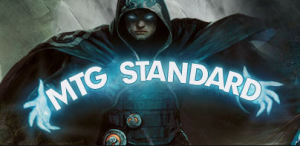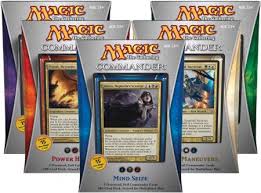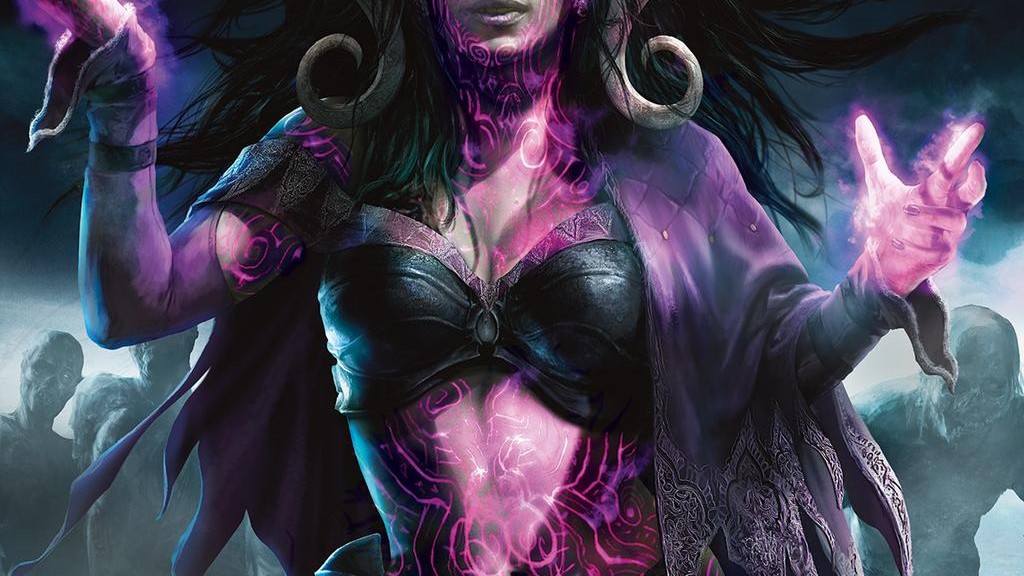The apples and oranges of MTGFinance might be clear cut to some, however to others they can lead to mistakes that make Magic a very frustrating game to play on a set-to-set basis when considering the financial aspect of the game. These are some of the areas of interest that we all are aware of but sometimes think that the application of one area can apply similarly to the another in exactly the same way. The differences are subtle, but can make a world of difference when you consider the ramifications.
Let’s take a look at some of these scenarios and see where the differences lie.


Example One – I’m buying or trading into my Standard cards for the next few months by closely watching Pro Tour coverage, and making my decision based on the the results seen. My friend is also making these same decisions at the same time but instead of watching Pro Tour coverage he is instead following the advice of Twitter personalities (finance or otherwise) in order to make his decisions.
Here, we might wrongfully assume that these two scenarios are basically the same thing. However, picking cards through watching coverage is vastly different than using Twitter to decide on which cards are the best to get in on. Twitter in this case can actually be much slower, and the reason why is the old adage “If someone already is talking about something it’s too late.” Also, by watching coverage you can actually see just how powerful the card in question really is. Did the card make an actual, significant impact on the game? Or was it just a “win-more” card that supplemented the game but wasn’t the vital piece of the deck’s strategy? A picture is worth 1,000 words and video coverage is almost impossible to convey in 140 character blurbs.
The reason I mention this is because even I myself have been burned in the past by thinking that Twitter is enough to see where card prices are going based on weekend results. The real gains come from a more in-depth look at the weekend, including watching live coverage and also deck analysis (if you have insider access to SCG premium for example) prior to the event.
In this example, both players would be on the same level if they both analyzed results on a deeper level.


Example Two – I have a great idea for a spec, and want to buy in on that spec in mass quantities before the market catches up to the real demand. So, I buy 300 copies of the card all at less than $1. The card is from the Commander product series and does see an increase from $0.75 to $4 within the next week.
My friend also decides to spec on a card, and he buys in on 300 copies of his card as well. The card is from a Standard legal set and also goes from (let’s say) $0.50 to $3 overnight as results from the latest tournament roll in. We’re both going to making bank, right?
Well, here you would (almost always) be dead wrong. Commander speculations are certainly great, however they are always for the long term – when making a Commander speculation I know that I am going to hold onto that card for at least one year before I can start largely liquidating the stock. Standard, on the other hand, everyone wants because it is the most popular format. That card that my friend speculated on will be super easy to liquidate since all the big retailers are going to want 20+ copies each, and will continue to want them as they keep selling out of stock. This also means that the buylist price will stay higher for a longer time since the demand is just so much greater. Niche cards tend to have their buylist prices decreased once supply is filled since stores run out of stock less often.
This is why for Commander I prefer to stock up on foil versions of popular cards rather than non-foil versions, simply because as they age they will go up even more in value than non-foil versions and I get the added benefit of being able to easily sell them on eBay since many players pick up foils through that medium. I’ve got a solid binder of Commander foils that keeps appreciating nicely over the years, and I attribute it to my philosophy on trying to get foil versions of Commander cards over non-foil.


Example Three – I keep a running tab of my purchases, sells, and profit margins through a spreadsheet that I maintain myself. My friend uses several different sources to keep track of progress – PucaTrade, Deckbox, MTGPrice, etc. We both know exactly where we stand in terms of net profits, right?
Here, the line becomes more blurred between apples looking more like oranges but I still feel that these two separate methods are distinct in a very big way. Time management. Managing your own spreadsheet of gains and losses, trades and buylist sells, can be exhausting and it doesn’t have to be that way. I used to spend hours combing through my list, sometimes daily, to see where I was headed in terms of boosting the value of my collection. Now, the internet and programming have made much that management very efficient. Utilizing tools like PucaTrade, Deckbox, and MTGPrice to keep track of a collection is nothing short of incredible. Only slight updates are needed and the system takes care of the rest. Sure, there are still time management issues when it comes to inputting large amounts of cards at a time (which hopefully will be resolved as picture scanning software becomes more usable for both commercial and private ventures) but hopefully as time goes on it will become less painful to manage larger and larger collections.
Look Out for Differences!
I hope that this article has shown you that there are differences, however slight, in the way that scenarios are setup that can lead to hugely different outcomes when dealing with the financial side of Magic. I’ve shared my top three scenarios that I find can sometimes mislead players into thinking they will get the same outcome as someone else, however did you have any other scenarios in mind when reading this article that you also think are pretty relevant to Magic (or more specifically MTG Finance) ?
I’m always on the lookout for more ways in which things appear to be the same but are actually different, for it is in this way in which we find the best path to compare methods and to see the optimal way to improve them.











